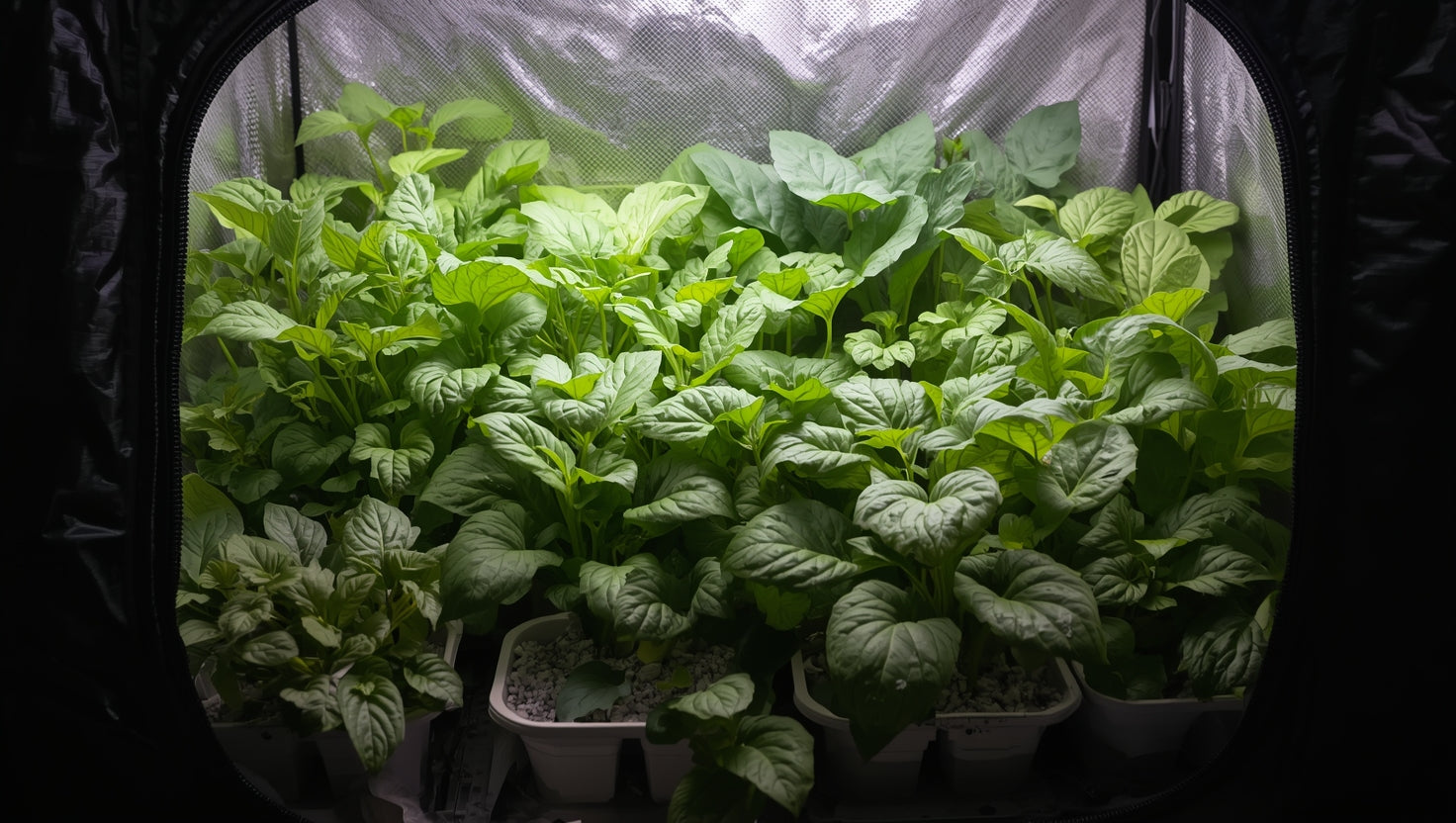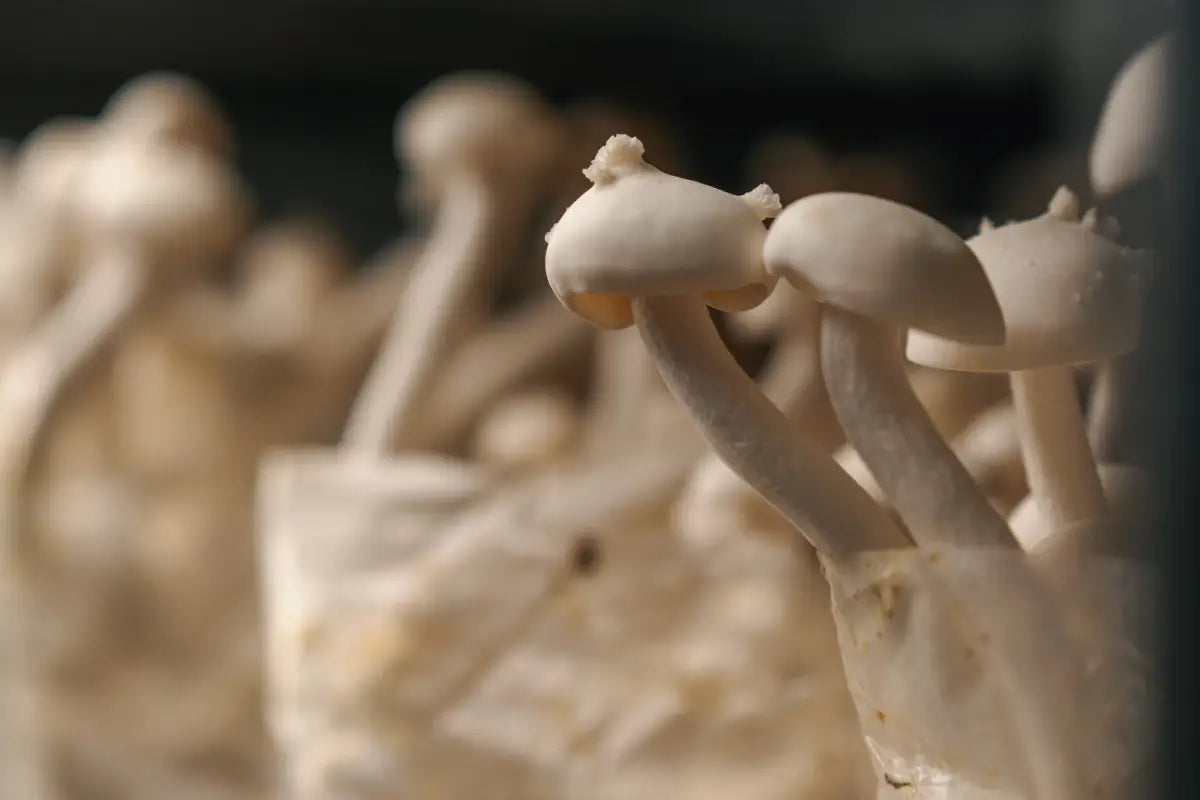
Best Materials for Mushroom Fruiting Tents (2025): The Ultimate Guide to Durability, Humidity & Growth
Introduction: Why Material Quality Matters for Mushroom Cultivation
Successful mushroom cultivation hinges on creating the perfect microenvironment—one that balances humidity, temperature, air exchange, and light. The materials used in your fruiting tent directly impact your ability to maintain these delicate conditions. In 2025, advancements in grow tent materials have revolutionized what's possible for both hobbyist and commercial mushroom growers.
Unlike plants that require intense light and can tolerate fluctuations in conditions, mushrooms are exceptionally sensitive to their environment. The right materials in your fruiting tent can make the difference between abundant harvests of healthy mushrooms and disappointing results plagued by contamination or poor development.
This comprehensive guide explores the essential materials that create the ideal mushroom fruiting environment, helping you select components that will provide the perfect conditions for your fungi to thrive.

Canvas Material: The Critical Outer Layer
The exterior fabric of your mushroom fruiting tent serves as the primary barrier between your carefully controlled growing environment and the outside world. This component demands particular attention when selecting a quality tent.
High-Density Fabric: The Gold Standard
Mushroom cultivation requires specific levels of humidity, temperature, and airflow that are difficult to maintain in an open environment. Gorilla Grow Tent To maintain these conditions, the outer canvas must be:
- Thick and Durable: The industry gold standard is 1680D canvas, which provides superior insulation and moisture retention
- Light-Proof: Complete darkness during certain growth phases is essential for many mushroom varieties
- Waterproof: Prevents external moisture from entering and internal humidity from escaping
- Mold and Mildew Resistant: Critical for preventing contamination of your mushroom cultures
Gorilla Grow Tents use professional-grade 1680D fabric that's up to 9x denser than standard grow tents, creating an ideal sealed environment for mushroom cultivation.
Interior Lining: Optimizing Your Growing Space
The interior surface of your mushroom fruiting tent plays a crucial role in:
- Humidity Maintenance: Non-porous surfaces prevent moisture absorption
- Light Distribution: While mushrooms don't require intense light, some species benefit from diffused, indirect illumination
- Cleanliness: Smooth, washable surfaces minimize contamination risks
The best mushroom tents feature reflective diamond Mylar interiors that maximize light efficiency while providing a surface that's easy to clean and sanitize between growing cycles.
Frame Construction: Supporting Your Mushroom Growing System
The structural framework of your mushroom fruiting tent needs to support not just the tent fabric but all the equipment necessary for optimal growing conditions.
Metal Frame Characteristics
Our grow tents are made with 1680D thick canvas, which provides excellent insulation and durability. Gorilla Grow Tent Equally important is the frame supporting this quality canvas:
- Material Composition: Powder-coated steel prevents rust in high-humidity environments
- Load Capacity: Should support at least 300 pounds to accommodate shelving, lighting, and equipment
- Interlocking Design: Eliminates weak points that could compromise stability
- Corner Connectors: Reinforced corners prevent collapse in high-humidity environments
Adjustable Height: Accommodating Different Mushroom Varieties
Different mushroom species have varying height requirements. Oyster mushrooms typically fruit vertically, while lion's mane develops rounded, cascading formations. An adjustable height feature allows customization for:
- Varying mushroom growth habits
- Multiple growing racks or shelves
- Installation of humidification systems
- Proper air circulation patterns
Ventilation Systems: The Lifeline of Mushroom Production
Proper airflow is crucial for mushroom development. Gorilla Grow Tent While mushrooms thrive in high humidity, they also require fresh air exchange to trigger fruiting and prevent CO2 buildup.
Ventilation Port Requirements
The most effective mushroom fruiting tents feature:
- Multiple Ventilation Ports: Strategically placed for cross-ventilation
- Double-Cinching Ducting Ports: Allow precise airflow control
- Micro-Mesh Air Intakes: Prevent contaminants and pests from entering
- Adjustable Vents: Enable fine-tuning air exchange rates for different growing phases
Fan Integration Options
Quality mushroom tents should accommodate:
- Inline fans for continuous air exchange
- Carbon filters for odor control (particularly important for certain mushroom varieties)
- Humidity-controlled ventilation systems
- Oscillating fans for internal air movement

Flooring Material: Protecting Against Contamination
The floor of your mushroom fruiting tent serves as both a moisture barrier and contamination protection system.
Spill Tray Requirements
The ideal floor material for mushroom cultivation provides:
- Waterproof Barrier: Contains any water or substrate spills
- Removable Design: Allows for thorough cleaning between grows
- Raised Edges: Prevents water from escaping the growing environment
- Non-Porous Surface: Minimizes bacterial and fungal growth
Additional Floor Considerations
For advanced mushroom growers, consider:
- Washable Floor Liners: Easily sanitized between growing cycles
- Modular Design: Sections that can be individually removed and cleaned
- Anti-Microbial Treatments: Added protection against competitive organisms
- Insulation Properties: Maintains consistent temperatures from below
Access Features: Maintaining Your Mushroom Environment
Mushrooms are sensitive to contamination, so it's crucial to maintain a clean and sterile environment. Gorilla Grow Tent The entry points to your tent should be designed to minimize disruption to the growing environment.
Door Design Elements
The most effective door designs include:
- Industrial-Grade Zippers: Prevent failure in high-humidity environments
- Overlapping Door Flaps: Create airlocks that minimize contamination
- 360-Degree Access: Multiple entry points for managing different growing areas
- Easy-View Windows: Allow monitoring without opening the tent
Viewing Windows: Essential for Monitoring
Our grow tents come with easy-to-use doors and viewing windows, allowing you to check on your mushrooms without disrupting their environment. Gorilla Grow Tent Quality viewing windows should feature:
- Light-Proof Covers: Prevent light leakage when closed
- Clear Vinyl: Provides undistorted views of your mushrooms
- Strategic Placement: Positioned to view critical areas
- Sealed Edges: Maintain internal humidity levels
Organization and Convenience Features
The most effective mushroom fruiting tents include practical features that enhance usability and organization.
Tool Organization
Look for tents with:
- Integrated Tool Pouches: Keep essential tools clean and accessible
- Internal Hanging Bars: Support hygrometers, thermometers, and small equipment
- Cable Management: Organizes electrical cords for fans, humidifiers, and lights
- External Pocket Storage: Keeps documentation and notes dry and accessible
Cleaning and Maintenance Accessibility
Modern grow tent technology has made mushroom cultivation accessible to beginners while providing advanced features that satisfy experienced cultivators. Gorilla Grow Tent These features should include:
- Removable Components: Allow thorough cleaning of all surfaces
- Smooth Interior Surfaces: Prevent spore and bacteria accumulation
- Access Ports: Enable equipment maintenance without full tent entry
- Modular Design: Permits replacement of individual components as needed
Best Mushroom Varieties for Grow Tent Cultivation
Different mushroom species have varying requirements that influence your material choices. Here's how to optimize your tent for popular varieties:
Oyster Mushrooms: Versatile and Forgiving
Oyster mushrooms (Pleurotus ostreatus) thrive in humid environments with:
- 85-95% humidity during fruiting
- Moderate light requirements
- Excellent vertical fruiting behavior ideal for shelving systems
- Relatively forgiving of temperature fluctuations
Shiitake: Temperature Sensitive Delicacies
Shiitake mushrooms (Lentinula edodes) require:
- More precise temperature control (55-70°F)
- Lower humidity (75-85%) than oyster mushrooms
- Excellent ventilation to prevent bacterial blotch
- More space between fruiting blocks
Lion's Mane: The Gourmet Challenge
Lion's Mane mushrooms (Hericium erinaceus) demand:
- Extremely high humidity (90-95%)
- Excellent air exchange without humidity loss
- Protection from direct airflow that can damage delicate "teeth"
- Consistent temperatures (65-70°F) throughout development
Setting Up Your Mushroom Fruiting Tent: Material Organization
Proper arrangement of materials within your tent maximizes success:
Shelving Materials
Begin setup by selecting an appropriate location away from direct sunlight, temperature extremes, and high-traffic areas that might introduce contamination. Gorilla Grow Tent Then, organize your interior with:
- Food-Grade Plastic Shelving: Easily sanitized and durable
- Stainless Steel Racks: Premium option for commercial growers
- Proper Spacing: Allow adequate airflow between mushroom blocks
- Height-Adjustable Shelves: Accommodate different mushroom varieties
Substrate Placement Strategy
Organize substrate blocks or bags to optimize:
- Vertical space utilization
- Air circulation patterns
- Access for harvesting
- Humidity gradients within the tent
Maintenance and Longevity of Tent Materials
Mushrooms require precise environmental conditions that can be challenging to maintain in open spaces. Gorilla Grow Tent To maintain these conditions over time:
Regular Cleaning Protocol
- Between Grows: Completely disassemble and sanitize all components
- During Production: Wipe down walls with food-safe sanitizer
- Spore Management: Use HEPA filtration during cleanup to prevent spore spread
- Fabric Inspection: Check regularly for micro-tears or zipper issues
Material Longevity Considerations
High-quality materials pay dividends through:
- Extended useful life (3-5 years for professional-grade tents)
- Reduced contamination incidents
- Consistent yields across multiple growing cycles
- Lower replacement costs over time
FAQs About Mushroom Fruiting Tent Materials
What fabric density is best for mushroom tents?
Look for at least 1680D canvas, which provides the durability and insulation needed for maintaining the high humidity levels (80-95%) that mushrooms require during fruiting stages.
How important is the tent frame material for mushroom cultivation?
Extremely important—frames must withstand constant high humidity without rusting or warping. Powder-coated steel is the industry standard, capable of supporting heavy equipment and resisting corrosion.
Can I use a standard plant grow tent for mushroom cultivation?
While possible, standard plant tents often lack the ventilation features and humidity control needed for optimal mushroom production. Purpose-built mushroom tents like the Gorilla Mushroom Grow Tent offer specialized features that significantly improve results.
How do I prevent contamination in my mushroom tent?
Choose tents with smooth, cleanable interior surfaces, proper air filtration on intake ports, and quality zippers with overlapping flaps. Implement a strict cleaning protocol between growing cycles.
What's the ideal size for a beginner's mushroom fruiting tent?
Start with a 2'x4' or 4'x4' tent, which provides adequate space for experimentation while being manageable for humidity and temperature control.
Summary: Investing in Quality Materials for Mushroom Success
The materials used in your mushroom fruiting tent directly impact your cultivation success. High-density fabric, sturdy metal frames, proper ventilation systems, quality flooring, and convenient access features work together to create the perfect microenvironment for mushroom production.
While budget options exist, professional-grade materials pay for themselves through improved yields, reduced contamination, and longer equipment life. For serious mushroom cultivators, investing in quality from the beginning establishes a foundation for consistent success.
Your Next Step: Upgrade to Professional Mushroom Cultivation
Ready to take your mushroom growing to the next level? Gorilla Grow Tents provide the industry's highest quality materials specifically designed for mushroom cultivation. With superior fabric density, reinforced frames, and specialized ventilation features, these professional-grade tents create the perfect environment for maximum mushroom yields.
Visit our online store today to explore our complete range of mushroom cultivation equipment, from specialized tents to comprehensive growing kits designed to help you achieve commercial-quality results at home.

Lena Myles
I'm a mushroom enthusiast and home cook based in Oregon. I'm passionate about foraging and creating fungi-focused recipes, especially delicious, plant-based dishes using gourmet mushrooms like trumpet, shiitake, and oyster. When I’m not in the kitchen, you’ll usually find me wandering the woods in search of new wild flavors.


